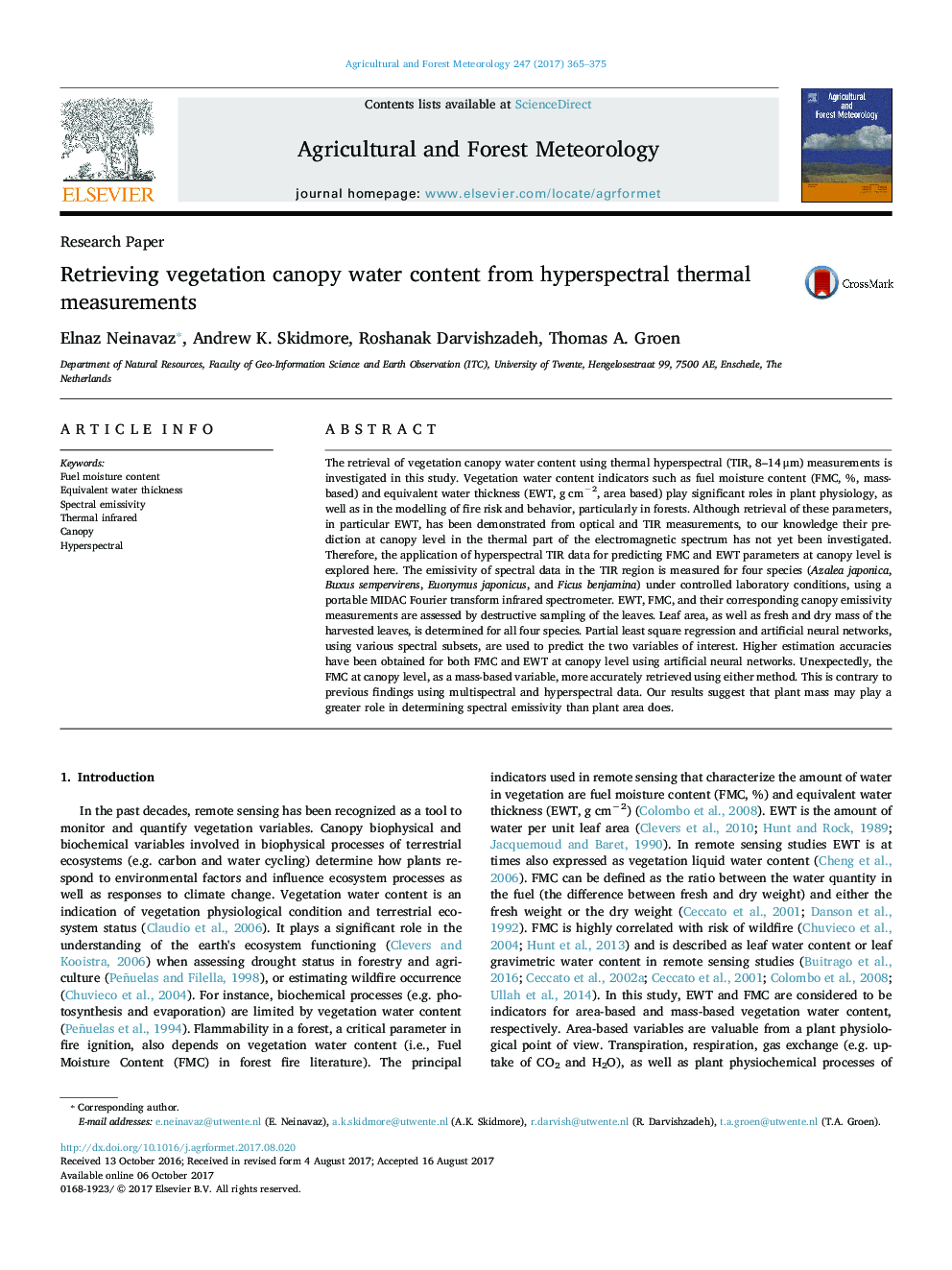| کد مقاله | کد نشریه | سال انتشار | مقاله انگلیسی | نسخه تمام متن |
|---|---|---|---|---|
| 6457802 | 1420854 | 2017 | 11 صفحه PDF | دانلود رایگان |
- Vegetation water content can be predicated at canopy level using canopy emissivity spectra.
- Thermal Infrared data is more sensitive to mass based than area based canopy water content.
- The relationship between thermal infrared emissivity spectra and canopy water content is species-specific.
The retrieval of vegetation canopy water content using thermal hyperspectral (TIR, 8-14 μm) measurements is investigated in this study. Vegetation water content indicators such as fuel moisture content (FMC, %, mass-based) and equivalent water thickness (EWT, g cmâ2, area based) play significant roles in plant physiology, as well as in the modelling of fire risk and behavior, particularly in forests. Although retrieval of these parameters, in particular EWT, has been demonstrated from optical and TIR measurements, to our knowledge their prediction at canopy level in the thermal part of the electromagnetic spectrum has not yet been investigated. Therefore, the application of hyperspectral TIR data for predicting FMC and EWT parameters at canopy level is explored here. The emissivity of spectral data in the TIR region is measured for four species (Azalea japonica, Buxus sempervirens, Euonymus japonicus, and Ficus benjamina) under controlled laboratory conditions, using a portable MIDAC Fourier transform infrared spectrometer. EWT, FMC, and their corresponding canopy emissivity measurements are assessed by destructive sampling of the leaves. Leaf area, as well as fresh and dry mass of the harvested leaves, is determined for all four species. Partial least square regression and artificial neural networks, using various spectral subsets, are used to predict the two variables of interest. Higher estimation accuracies have been obtained for both FMC and EWT at canopy level using artificial neural networks. Unexpectedly, the FMC at canopy level, as a mass-based variable, more accurately retrieved using either method. This is contrary to previous findings using multispectral and hyperspectral data. Our results suggest that plant mass may play a greater role in determining spectral emissivity than plant area does.
Journal: Agricultural and Forest Meteorology - Volume 247, 15 December 2017, Pages 365-375
